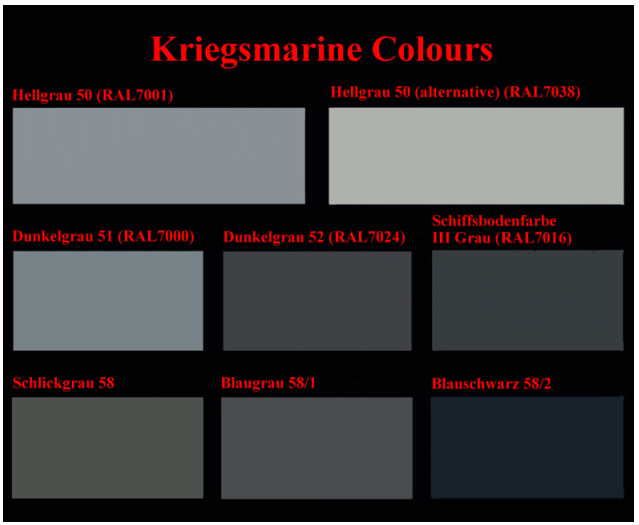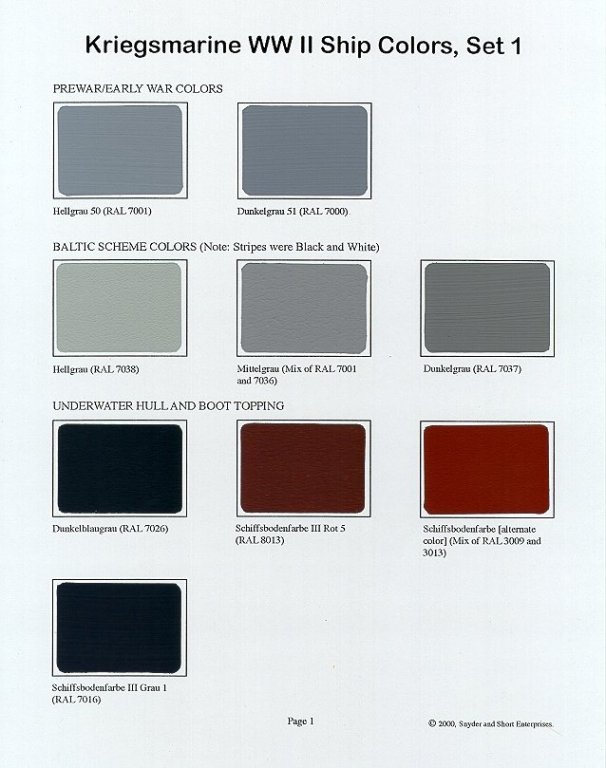-
Posts
3,484 -
Joined
-
Last visited
Content Type
Profiles
Forums
Gallery
Events
Everything posted by yvesvidal
-
Should you not have a hole under the latrines, or are they using buckets? Yves
- 315 replies
-
- master korabel
- avos
-
(and 1 more)
Tagged with:
-
I love that distressed wood. So well done. Yves
- 345 replies
-
- graf zeppelin
- trumpeter
-
(and 2 more)
Tagged with:
-
Another small piece of details, in that compartment: the ammunition magazine ! The kit is very crude of course and I added another stack of ammunition boxes and a ladder to go inside the magazine: Not much will be visible once the floor is in place, but the satisfaction to know it is there is enough to justify a couple of minutes spent on that small room. Access was through the floor and some removable plate. Same for the battery room access done through another plate, in the floor. Apparently, the ammunition magazine could be flooded to prevent explosions in case of fire on board (I still have to find definitive explanations about that one - It would have been a controlled flooding (spray like) and the water would be removed via the bilge pumps). Yves
-
Thank you Guys. It is fun to improve on this kit. Lots of possibilities if you do a little bit of research on the Type VIIc. I wish there was a PE set for batteries connections. That would have been insane.... I am trying to replicate some more details on the bottom section of that module. More to come.... Yves
-
Gorgeous work on the railing and nets. Yves
- 345 replies
-
- graf zeppelin
- trumpeter
-
(and 2 more)
Tagged with:
-
Beautiful Jack, very impressive. So neat and clean. Yves
- 190 replies
-
- ragusian
- marisstella
-
(and 1 more)
Tagged with:
-
Small progress on the battery compartment with a spin.... The batteries on the Type VIIc were connected in series/parallel to obtain up to 110 Volts DC: Below is a schematic of the Batteries wiring. In this module, we are talking about Battery #2 (Battery #1 is located towards the stern of the boat). The switches are in the large electric frames sitting above the electric motors (see previous module for details). Depending of the type of accumulators, there could be 5 or 6 parallel connections between the cells, as shown in the following pictures: The cells provided by Trumpeter are slightly over sized and as such we can only represent 4 rows instead of 6 that were available on the prototype (the fourth row has been omitted to allow a peek into the compartment. Note that a detailed PE set could have been made to represent the connections bars between the cells. That would have been quite impressive.... to build and to display. These cells required a lot of maintenance (we are in 1939-40) and did not perform as well and as reliably as modern car batteries. A sliding platform was designed to allow a brave sailor to glide over the cells and keep them in good shape, by checking their electrolytes and cleaning any sulfate deposits on the connections: Let's keep in mind that the voltages could reach 110V DC with a total current capacity of 10,000 Amps. Touching the electrodes and connections was fatal in most cases as DC current burns irremediably. On my module, I tried to represent this interesting (although painful and tedious) aspect of the life aboard: The fellow uses the rope on his right side to move along the banks of cells. As you can see from the Trumpeter assembly plan, this is a little bit more involved and prototypical. It is always fun to try to improve on an existing kit. Yves
-
As previously mentioned, I am now working on the Officers Quarters, starting with the Battery compartment, underneath. The Trumpeter approach is somewhat simplistic, once again: The amounts of batteries does not match what was installed in the original boat. As you may recall, this section includes batteries but also ammunition, waste water tanks and fresh water tanks. Here is a cutout drawing of the compartment, looking towards the bow: - To the left is a fuel tank, included inside the pressure hull. - In the middle, the ammunition magazine and the waste/fresh water tanks. - To the right, another fuel tank, slightly smaller but still located inside the pressure hull. The Port tank is bigger because they used the space under the officers' beds to increase its size. On the starboard side, there was the radio and sonar rooms. You will notice that the bulkheads are also cut to represent the outside saddle tank ballasts. Of course, the Trumpeter kit totally ignores this aspect, even though it is clearly visible from the outside. So, we have to open some cuts, at least on the starboard: Matching cuts will have to be done on the other bulkhead, in the control room (left on the picture). I have decided to improve on the Trumpeter implementation and make that compartment a little bit more interesting and descriptive. Therefore, we are starting from this: And adding the representation of the fuel tanks, on both sides. To allow a peek into the battery room and ammunition magazine, it is necessary to "wave" the starboard tank wall: It is starting to come together: and with the waste tanks and fresh water tank as well as the magazine: I started designing and cutting some parts to close some of the pressure hull and represent the Fuel tank: But I realized that I had some spare parts and decided instead to use the ceiling of that same compartment to represent my external pressure hull section. After cutting it to size, this is what we have: It is a lot more prototypical than whatever I could have done and come with the internal ribs of the pressure hull. Once painted, the result is not too bad: All the batteries (3 rows) in this compartment have been painted. I will need to dry brush them to represent some connections and the sulfate on the connections. The fourth row of batteries will not be represented for the reason that you will see later....(surprise). Note that I have exhausted almost all the batteries included in the kit. It is a good thing, I have another set for the rear compartment. Yves
-
While waiting for the Humbrol cans to come from Europe, I have decided to start looking into the second module located right after the front torpedoes room. That module comprises Petty Officers bunks/Beds, Captain Quarters, Tables for eating, Water Closet, Radio room and Listening Room for the Sonar system. It also included Batteries, ammunition supplies and various tanks: It is a very packed module with the typical Trumpeter shortcuts and simplifications. Here again, the second set of parts will be most welcome to populate a compartment which is somewhat empty as designed in the kit. One major problem with the kit is the flat bulkhead between that compartment and the Command/control room. It would take a concave part to remedy that issue, which is not possible in our case. The upper/central level will be detailed later on. First, I will focus on the lower level of that compartment: Tanks, batteries, Magazine. The following picture summarizes what can be found in that section: Battery banks #2, the waste water tank #2, the ammunition magazine (for the main gun on the deck and machine gun on the conning tower) and the Fuel Oil inboard tank #2, located inside the pressure hull. We also have a fresh water tank #3. The following are excerpts from "The Manual": Ammunition. Total amount of ammunition that can be carried: 8.8 cm munitions: 205 rounds HE shell C/35 MG C/30 munitions: 1500 rounds Of these in munitions magazine in officers room between Frames 50 ½ – 53: 177 rounds 8,8 cm HE shell C/35 1200 rounds MG C/30 Ready-use ammunition for the S.K. C/35 is stored in pressure-proof canisters [one shell to a canister placed in a rack] in the upper deck just aft of and outside the operating circle to both sides of the conning tower: 28 rounds 8.8 cm HE shell C/35 3 ammo clips with 20 rounds each are stored in the conning tower. The munitions magazine in officers room is connected to the flooding and drainage installation. Battery. The auxiliary and main power supply of the boat consists of two separately arranged storage batteries. Battery 1 is located under the petty officers room and battery 2 is under the officers room. a) Technical and performance data. Type: 33 MAL 800 W Cells: 2 x 62 Number of negative plates: 34 Number of positive plates: 33 Cell weight: 493 kg +/- 2% Total weight of batteries: 61132 kg +/- 2% Capacity at 20 hour rate 9160 Amp hours b) Construction and maintenance. The cells of every battery are set up in 6 rows on step-shaped iron stands. Over the cells, there is an extractor duct that moves gases into the main exhaust trunk. Each cell is connected to the duct by a rubber tube. The U-tube manometer located outside of the battery room indicates the amount of suction in the extractor duct. Between the single plates of each cell are insulators. The negative plates are equipped with hard rubber feet and stand on the box bottom, while the positive plates hang in the box itself. Plates of the same polarity are grouped together, both groups form a package. This is covered with a glass plate for protection against foreign objects. The plates of each group are connected by terminal strips. Each strip has 5 terminals, which are passed through the box cover. Cell connectors (leaded copper rails) are screwed onto the terminals; the lid of the cells is double-walled and has 3 openings: Extraction opening Air entrance opening Operation opening The air entrance opening is designed in such a way that during a boat’s inclination up to 35° in any direction no acid is spilled from the cell. The cell case is made of hard rubber and so strongly constructed that the ready-for-operation cell is easily transported using eyelets. The joint between the box and the lid is filled with a sealing compound. The sealing compound can be melted by means of a wire inserted into the groove of the joint by connecting the wire ends to the terminals of the cell. Each cell has a rating plate with data regarding type, manufacturer's number, manufacture date of the positive and negative plates and details regarding repairs and maintenance of the battery. Operating life of the battery depends on careful maintenance. Maintenance includes cleaning of the upper surface of the cells. Foreign bodies or contamination should not drop into the cells through the operation openings. Particularly dangerous is sea water containing chlorine, which destroys the positive plates. An external inspection of the battery must be carried out frequently. All suction pipes are to be regularly inspected to ensure they are working properly. A defective ventilation system may cause a battery explosion. An examination of all cells must be performed every 4 weeks in conjunction with recharging. This includes compensation of acid levels by adding distilled water, the measurement of the acid density, temperature and the voltage of the individual cells. So that stands, and the pressure hull are not corroded by acid which spills into the battery rooms, the bilge water is to be examined frequently. Both battery rooms can be rinsed with slaked lime and are connected to the draining system. c) Capacity, discharging, final voltage. The capacity of a battery is mainly dependent on the discharging current and the cell temperature. The following capacity values are at a reference temperature of 30° C. Type 33 MAL 800 W Discharge current Duration Amp Hours Final Voltage in V Amps Hours Ah Cell 1/2 Battery 3630 1-1/2 5450 1.63 101.06 2960 2 5920 1.67 103.50 2200 3 6600 1.71 106.02 1480 5 7400 1.75 108.50 838 10 8380 1.78 110.36 458 20 9160 1.80 111.60 196 50 9800 1.80 111.60 The information listed in the preceding table about the capacity refers to discharging with a certain current, without interruption up to the final voltage. However, if discharge is stopped before battery exhaustion and is continued again later, the total capacity is greater. The battery has the ability to recover in the rest state. d) Charging. The Type 33 MAL 800 W charge begins with 1650 A (1st, charging phase) which is reduced gradually to 415 A (3rd, charging phase). Charging with low current is allowed. Cell temperature should not exceed 45° C. In special cases "fast charging” is done by doubling the 1st, charging phase, the charging time is shortened by about 1/3. 2) Wash water installation. Wash water is stored in the following tanks: 1 wash water tank (listening room) 1 wash water daily supply tank (aft W.C.) Wash water tank and wash water daily supply tank are connected to the fresh water filling and extracting line. Tanks are filled through the intake at the upper deck. The hand fresh water pump is used for filling the wash water daily supply tank from the wash water tank. A hand wash water pump provided in the forward W.C., to which a suction line can be switched by the selector cock to the wash water tank or to torpedo compensating tank 2. Extracting the wash water from torpedo compensating tank 1 takes place by means of compressed air. 3) Fresh water installation. Fresh water is stored in 3 tanks (3.870 m³) situated in: Fresh water tank 1: Galley, port, under the floor Fresh water tank 2: Control room, port Fresh water tank 3: Officers room, stb. The fresh water tanks are connected to the filling and extracting line through the fresh water selector cock. The line leads through the hull valve at the upper deck and inside the hull branches off to the emergency drain connection. The hand fresh water pump in the galley takes suction from selected tank and discharges through the control valve either directly to the tap in wash sink or through the filter. The water supplied by the distilling unit in the control room is collected in the distillate tank and is moved through the control valve either directly or through the filter to fresh water tank 1 in the galley. All fresh and wash water tanks have sounding pipes and dip sticks. Finally, a picture showing the internal partitions used to build the Fuel Oil tank from the Battery compartment: And a picture of the compartment under study (tube to the right): Yves
-
I am not too happy with the oil canning done with my airbrush. I suppose I do not have a small enough nozzle to draw very thin lines. It is probably okay with the lower section of the hull, since the color is very close to black/dark blue but for the upper section, something must be done: As you can see, it is not regular enough and I am concerned that it may show up in an unpleasant way, through the light gray. So, another light coat of primer to hide the mistakes: and of course, on the other side too: Using a brush and my hands, I have more precision: I think it may look a little bit better. Maybe not... I am experimenting and not sure where to go or what to do. Yves
-
Alright, the tedious and risky business of grinding the clear half-hull is over! Phew... It takes about one hour to open one cutout, grinding slowly, gently, at low speed to not melt the material. It is still very brittle so utmost care must be used. I hope these openings will be enough to see the interior compartments. It should work. A few PE parts have been glued and the hull is ready for the primer: That is a major milestone in the construction of that large model: I like that approach so much more than the clear (and also very opaque) hull provided by Trumpeter. I understand why they did it, as it is an enormous amount of work to cut these openings. With the Trumpeter solution, you put together the modules, glue then in the main hull and slap the clear hull on top....et voila. You are done. Not for me.... And the magnets used to put together the two halves are a life saver. The original plastic pins are long gone......as you can guess. A few view for the claustrophobia lovers: Et voila, the enchilada is ready for the painting. For the paint, I have ordered some acrylic Humbrol paints from Europe. Apparently, they have the colors that get the closest to the German colors of early Type VIIc submersible. We shall see! I think I am going to take a break of a few hours.... It is well deserved. Yves
-
Great job Cri-Cri. It is coming along nicely. Yves
- 550 replies
-
- confederacy
- model shipways
-
(and 1 more)
Tagged with:
-
Yes, I think the artist used that little fish to indicate that it is a ballast tank....unless it is his signature. Thank you for the kind words. It helps to tackle such long and arduous project. Yves
-
Since I may be in a position to apply some paint in the coming weeks, it is important to prepare the other/transparent side of the hull: This is the cutout for the Diesel Engine room. I applied a coat of primer to better see any mistakes or imperfections. Once all the cutouts are done, I may do the oil canning masking, put the hull together and try to paint the whole enchilada. Yves
-
The Type VIIc submersible has always been an icon, especially for European modelers. Revell and numerous plastic kits manufacturers have been offering that model for decades and every new release is met with a renewed passion and interest. The same goes with 3D rendering and computer modelling of that submarine. I wanted to show you what incredible work was done by some passionate people to render the rear torpedoes compartment. Just looking at it, you can realize what Trumpeter could have done with their kit, by pushing a little bit further the limits of today's technology: Spectacular work, to say the least. Yves
-
Coming back on the rudders and diving planes technology used by the German in their Type VIIc submersibles, and the stern in general: The picture above shows the famous U-995 sitting in Odela, Germany. Although this machine has been extensively modified throughout its career, it gives us a very good idea of what Type VIIc were during the war. Above the propeller shafts, you can see a ring attached to the hull: this ring was used to tie some ropes and allow maintenance crew to inspect and clean the propellers under water, in case of fouling or being tangled in nets or cables.. It was also used in Drydocks to help the repair folks. I should add that little detail to my model. Similar rings are also available on the diving planes. On the U-9995, the rear torpedo tube has been sealed. This is open to the public and they did not want kids to crawl inside the tube and fall outside. Therefore, the entire rear section has been welded with a steel plate, between the rudders. This drawing shows some cutouts of the stern and gives some dimensions about the propellers and rudders. You can see that the propellers are not directly blowing the rudders but they do it for the diving planes. Obviously the stern was not wide enough to allow the rudders to be in line with the shafts. The flow of water pushed against the stern is most likely very sufficient to provide some nice steering actions. On the second cutout, the storage area under floor calls for two torpedoes. The Trumpeter kit has only room for one, between the electric motors. The pressure hull in red is also visible with the steering mechanism on top. The last drawing gives you the electric/logic schematics of the rudders and diving planes (stern and bow) and how they were controlled from the command section, in the middle of the submersible. It is always good to know more about the technical details of the models we are building, don't you think? Yves
-
That model of the USS Rasher is truly impressive of details and accuracy. This is also a much bigger boat that the Type VIIc. Yves
-
Final details inside the rear compartment, the shaft brakes. This device was completely omitted by Trumpeter and that is a pity as it brings an interesting element to the understanding of how a submarine was operated. The Shaft brakes were located between the electric motors and the clutches to the propellers. This way, it was possible by stopping the motors, opening the clutches, locking the shafts and re-engaging the clutches to prevent the propellers from spinning. There are of course two brakes, one for each shaft. The following views clearly show where they were located with respect to the motors and shaft main bearings and their respective colors as painted on the U-995 on display (most likely, these were not painted this way during the war). Finally, some pictures of the rear compartment in the hull, with the shafts connected to the electric motors. I will have a to find a way to disguise that ugly piece of tube.... Above, you can see the two brakes added to the floor of the compartment. Close-up on the pressure hull end (courtesy of RCSUBs - 3D printed). This is bringing a conclusion to that rear module. I will populate it with a few sailors, at a later time. Yves
-
Colors, colors. Let's talk about U-boot colors. First of all, the correspondence of colors given by the Trumpeter chart is less than precise and sometimes totally arbitrary. So, it is not a good reference. More information can be found in the pamphlet written by Dougie Martindale, which is a fantastic mine of information and the result of years of intensive research on the subject. The following are excerpts of his excellent treatise on the U-Boot subject: "Kriegsmarine U-boats were painted in two greys. The first grey was painted on the conning tower and the upper hull (above the waterline). The second darker anti-fouling grey was painted on the lower hull, below the waterline. The horizontal division between the two greys took place just below the free-flooding holes on the hull. Early pre-war boats had this division line slightly lower than was common during the war. Some pre-war original Type VII boats (also known as VIIAs) had the tops of their saddle tanks painted in the upper colour, but most Type VIIs had the whole of their saddle tanks painted in the lower anti-fouling colour. Contrary to many illustrations in numerous publications, there was no bootline/boot-topping (the dark grey horizontal stripe between lower and upper waterline) on U-boats; these were only applied to surface units. The steel horizontal surfaces at the extreme bow and stern were either painted in the upper lighter grey or black. The wooden deck was coated with a wood preservative, and shall be discussed later. A number of side profiles, drawings and illustrations show U-boats with red lower hulls and black bootlines, and these have sparked countless debates within the modelling community. Many commentators maintain that no U-boats, either before or during the war, ever had red anti-fouling paint beneath the waterline. Another opinion is that at the very start of WWII some U-boats had red lower hulls, but at the next dry-docking they were painted dark grey. Other opinions hold that while some prewar boats may have been red, all wartime boats were dark grey. In the book Die Deutschen Uboote Geheim 1939-1945 (German U-Boat Secrets 1939-1945) by Richard Lakowski (Brandenburgisches Verlagshaus, 1997), there are two editions of the building regulations form Nr. 31, which specifies the application of paints upon U-boats. These can be found at: http://www.u-boot-archiv.de/dieboote/farben_maerz_1940.html http://www.u-boot-archiv.de/dieboote/farben_juli_1944.html The March 1940, November 1941 and July 1944 editions of this building regulation all state that the external sections of the lower hull were to be painted with two coats of anti-corrosion paint followed by one coat of the anti-fouling dark grey paint Schiffsbodenfarbe III Grau (DKM 23a, literally “ships bottom colour 3 grey”). This was called Wasserlinienfarbe W.L. III Grau (literally “water line colour W.L. 3 grey”) in the first two editions, but as previously mentioned this was exactly the same paint as Schiffsbodenfarbe III Grau. Finally, another coat of Schiffsbodenfarbe III Grau (DKM 23b) was to be applied. 23b was exactly the same paint as 23a; the letters were used to specify that two coats were to be applied. There is no mention anywhere in these regulations of Dunkelblaugrau (RAL 7026), which is included in the Snyder & Short paint chip cards and White Ensign Models’ KM paint range (Colourcoats KM03). The wartime painting regulations are thankfully available to us, but the pre-war painting regulations are, unfortunately, not in common circulation. These pre-war regulations would likely have shed light on the question of whether red anti-fouling paint and dark grey bootlines were applied to prewar boats at any stage. It is especially regrettable because in black and white photographs it is impossible to distinguish with any degree of certainty between a red and a dark grey hull. Since the U-boat arm had been experimenting with the colours above the waterline in the years leading up to the commencement of hostilities, could it have been possible that they also experimented with the colours below the waterline? A comment by U 35 veteran Kurt Grosser suggests to me that colours other than dark grey were used in pre-war times. He maintains that when he reported aboard U Kriegsmarine U-Boat Colours & Markings The Wolf Pack: A Collection Of U-Boat Modelling Articles Page 22-35 in April 1939 the lower hull of this U-boat was dark green. We should be extremely careful when dealing with veterans’ memories of the colours used 60 to 65 years ago, but this comment is interesting in light of the fact that a green anti-fouling paint - Schiffsbodenfarbe I Grün (DKM 24a and 24b) - was mentioned in the 1944 painting regulations. Wartime upper greys Immediately prior to the war, the most common scheme within the U-boat fleet consisted of Dunkelgrau 51 on the upper hulls and towers. Very soon after the start of hostilities the Dunkelgrau 51 paint on a few U-boats such as U 30 was replaced by Hellgrau 50. Over the course of the winter of 1939, the Hellgrau 50 paint gradually became as common as Dunkelgrau 51. Many of the U-boats which were completed in 1940 (such as U 69, U 94, U 99 and U 552) sported this light grey Hellgrau 50 colour when launched. The contention by some that most wartime U-boats were the light grey Hellgrau 50 is wholly inaccurate, as both Hellgrau 50 and Dunkelgrau 51 were commonly used upon wartime U-boats. The common use of both these colours is supported by the well-researched 3-part decal sheet by U.L.A.D.- decal for the Revell 1/72nd Type VIIC U-boat kit. Another colour which was commonly used was Schlickgrau 58. Blaugrau 58/1 and Dunkelgrau 52 were much less common, and Blauschwarz 58/2 was hardly used at all. According to Randy Short of Snyder & Short Enterprises, Blauschwarz 58/2 was not used at all upon Type VIIs. Dunkelgrau 53 was used in camouflage patterns, but was rarely (if at all) used as a sole upper colour. It would have been somewhat helpful if the painting regulations had stated which of the Kriegsmarine paints were to have been used upon the upper hulls and conning towers of U-boats. Unfortunately they don’t, and so are of limited use to us. The painting regulations stated only that shipyards had to ask the High Command for instructions on painting the upper colour of each individual boat, and that the U-boat’s planned operational area would often influence the shade of grey used. The latter does help us with the boats which served in the Arctic and in the Mediterranean, and shall be discussed shortly. The regulations offer absolutely no help to us on the question of which of the three most common colours - Hellgrau 50, Dunkelgrau 51 or Schlickgrau 58 - was used on boats serving in the Atlantic or training in the Baltic. All we can do is attempt the difficult and often frustrating task of photographic interpretation. It is very difficult to differentiate between Hellgrau 50 and Dunkelgrau 51 in black and white photos where no reference point is available. In general terms, the Hellgrau 50 paint looks very light – even white – in photos where the sun is shining upon the surface in question. Dunkelgrau 51 can look light when there was a lot of light present in the photograph, but does not ever look white like the Hellgrau 50 sometimes does. For modellers attempting to determine whether their chosen subject was Hellgrau 50 or Dunkelgrau 51, it is advisable to study photographs of warships where these colours are known to have been used (as previously mentioned the superstructures of pre-war and early wartime vessels were Hellgrau 50 and the upper hulls were Dunkelgrau 51). Although a marked contrast between these colours can be seen in photos of Kriegsmarine warships, it is still very difficult – sometimes impossible to distinguish whether one or the other was used on a U-boat merely by photographic interpretation. Such an exercise is often extremely frustrating and highly subjective. One factor which may have caused some confusion regarding U-boat upper colours is the name of the Dunkelgrau 51 paint itself. Although “dunkel” means dark, the paint was very far from a dark grey. It wasn’t even on the darker side of medium grey. As the above photo above shows, if anything the so called “Dunkelgrau 51” was on the lighter side of medium grey. The Dunkelgrau 51 name is therefore a misnomer. Many modellers, of course, have assumed that Dunkelgrau 51 was dark grey. In thinking this, they would next think that the upper colour in U-boat photos could not possibly be the “dark grey” Dunkelgrau 51. Rather it must be the light grey Hellgrau 50. Others do know the true shade of Dunkelgrau 51 from paint charts. But the “Dunkelgrau” name can still exert influence, leading to a preference for Hellgrau 50. Over the years many modellers have chosen a light grey paint for their upper hull on their U-boat models. One could argue that the medium and dark grey colours have not been chosen frequently enough. Furthermore, a good case could be made that U-boat upper colours were often darker than many enthusiasts have realised. This is particularly true of the mid to late war period, when light grey upper colours were less common. For those who still hold that the light grey Hellgrau 50 paint was “standard” on U-boats, let us refer to the painting regulations. The March 1940 edition states that either Dunkelgrau 51 or Schlickgrau 58 were to be used; the November 1941 regulations and the July 1944 regulations both state that Schlickgrau 58 was to be used. We remember that the shipyards had to ask the High Command for instructions on painting the upper colour of each individual boat, so in practice there were a few paints to choose from. But the two paints specifically mentioned in the regulations did not include Hellgrau 50. The light grey Hellgrau 50 was certainly commonly used, but equally certain is that this paint was not the “standard upper colour”. As well as the High Command, it is quite likely that the commanders and the bosses at the shipyards would also have had an influence over which upper colours were used. Such individuality between boats can be illustrated with U 47 and U 99. Both these famous U-boats served in the Atlantic, were based at Lorient toward the end of their careers, and were sunk in March 1941. The upper colour of U 47 was Dunkelgrau 51 until the summer of 1940, when it was changed to a darker shade that may have been Schlickgrau 58. U 99, on the other hand, was Hellgrau 50 throu ghout its illustrious career.This was perhaps because at the time U 47 was launched Dunkelgrau 51 was the prominent colour, and when U 99 was launched it was more usual for Hellgrau 50 to be used at the Germaniawerft shipyard. We should remember that U-boats often sported different colours at various times. Even boats that sailed from the same Atlantic base on every patrol were subject to paint colour changes. There are a multitude of possible reasons for these changes. A lack of availability of a particular paint at a certain time, the preference of a new commander for a camouflage scheme, or a change of operating base could all be potential reasons. In the case of the U-boats serving in the Mediterranean, the theatre of operations did make a difference since it was commonplace for camouflage to have been used in that area. The same can be said for the Arctic, where conning towers were sometimes painted white. U-boats operating out of Norway sometimes had the upper half of the conning tower, above the spray deflector, or all of their conning tower, painted white. This was intended to allow the boat to blend in better with the sea mists and fogs that often hang close to the surface of the water in high latitudes. A number of colour photos of the school U-boats based at Gotenhafen in the winter of 1941/42 show all of the upper colours to be the same dark grey colour. All these boats were a dark grey that may have been as dark as the lower hull grey. A colour shot of U 595 in Danzig in the early months of 1942 shows that this boat had a darkish grey upper colour at that time. Another colour shot, taken in Drontheim in perhaps 1942, shows all of the U-boats with the same dark grey upper colour. The majority of U-boat models have a light grey upper colour, with some painted with a medium grey. But as many photos show, modellers should not shy away from painting their model with a dark grey upper colour." Dougie Martingale studies goes a lot deeper in the subject, but that should suffice to realize that we need two colors for that specific model. Now, to find them.... Another sampler of Kriegsmarine colors: Yves
About us
Modelshipworld - Advancing Ship Modeling through Research
SSL Secured
Your security is important for us so this Website is SSL-Secured
NRG Mailing Address
Nautical Research Guild
237 South Lincoln Street
Westmont IL, 60559-1917
Model Ship World ® and the MSW logo are Registered Trademarks, and belong to the Nautical Research Guild (United States Patent and Trademark Office: No. 6,929,264 & No. 6,929,274, registered Dec. 20, 2022)
Helpful Links
About the NRG
If you enjoy building ship models that are historically accurate as well as beautiful, then The Nautical Research Guild (NRG) is just right for you.
The Guild is a non-profit educational organization whose mission is to “Advance Ship Modeling Through Research”. We provide support to our members in their efforts to raise the quality of their model ships.
The Nautical Research Guild has published our world-renowned quarterly magazine, The Nautical Research Journal, since 1955. The pages of the Journal are full of articles by accomplished ship modelers who show you how they create those exquisite details on their models, and by maritime historians who show you the correct details to build. The Journal is available in both print and digital editions. Go to the NRG web site (www.thenrg.org) to download a complimentary digital copy of the Journal. The NRG also publishes plan sets, books and compilations of back issues of the Journal and the former Ships in Scale and Model Ship Builder magazines.




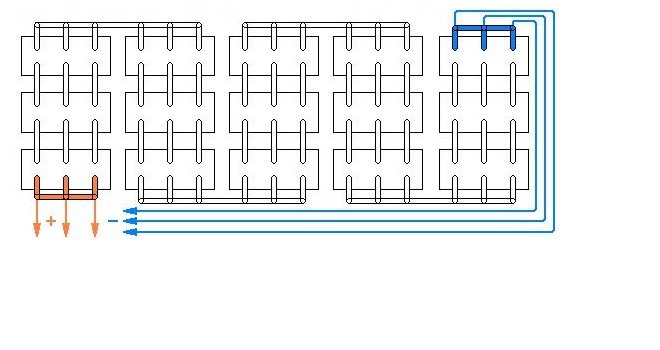
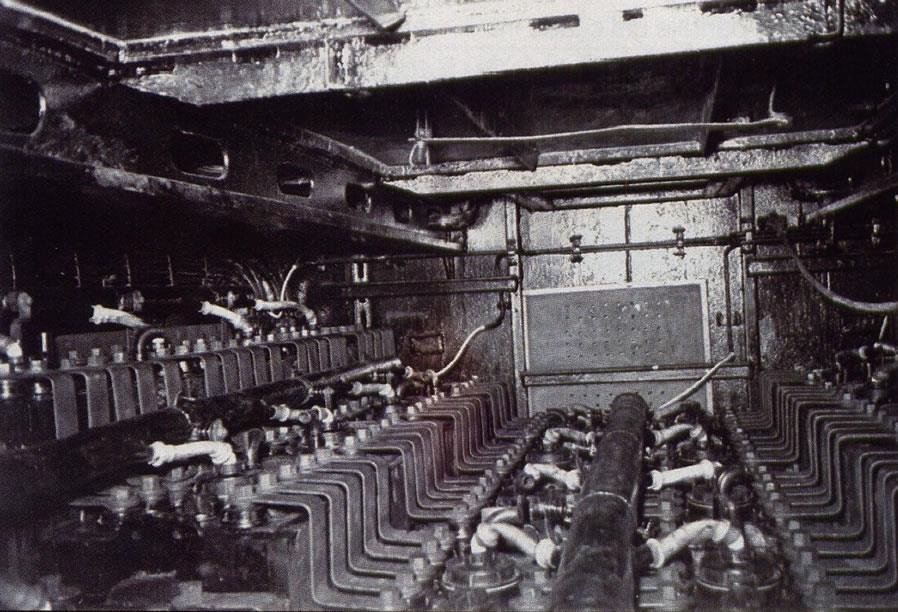

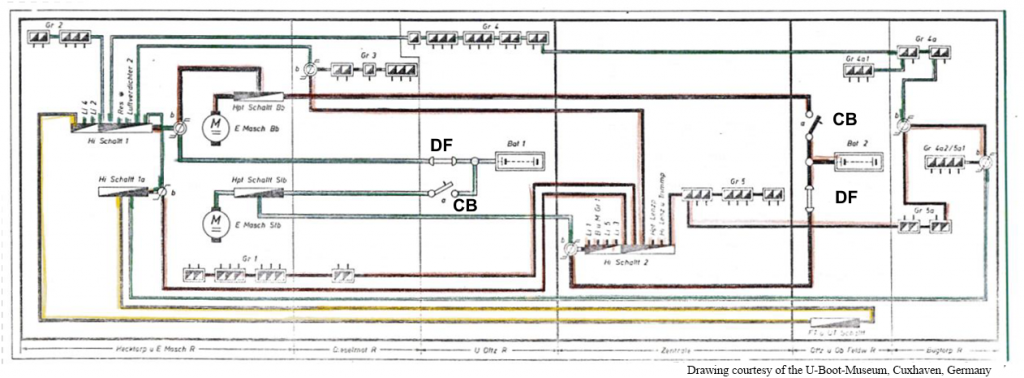
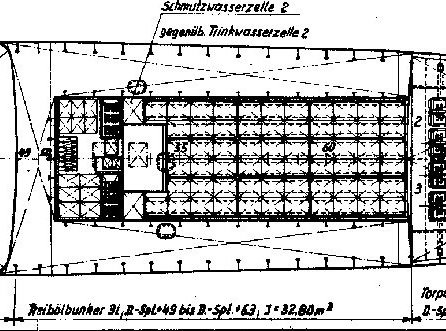
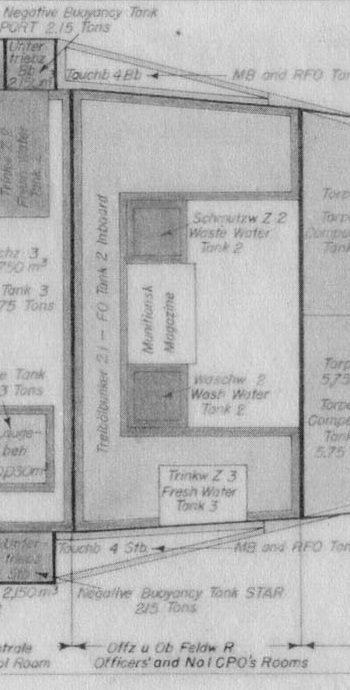
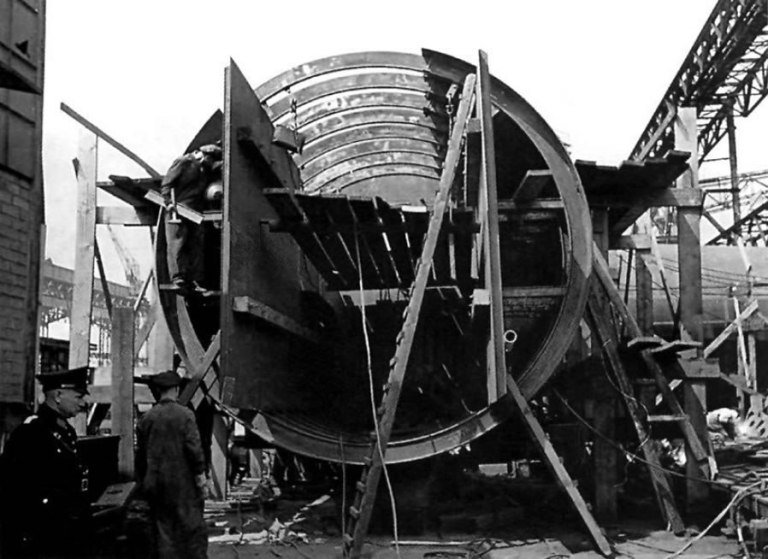
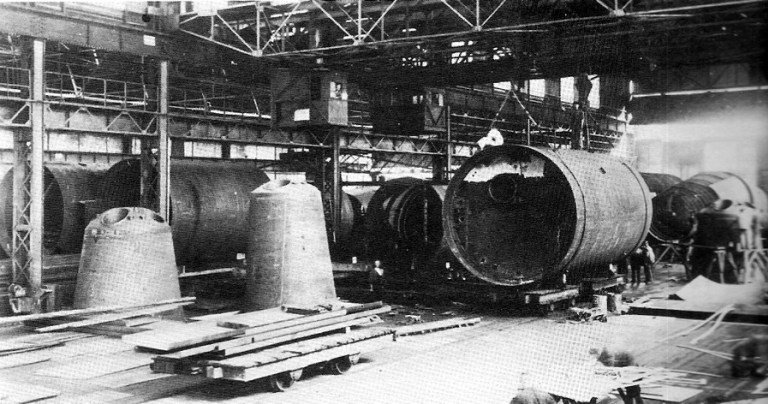
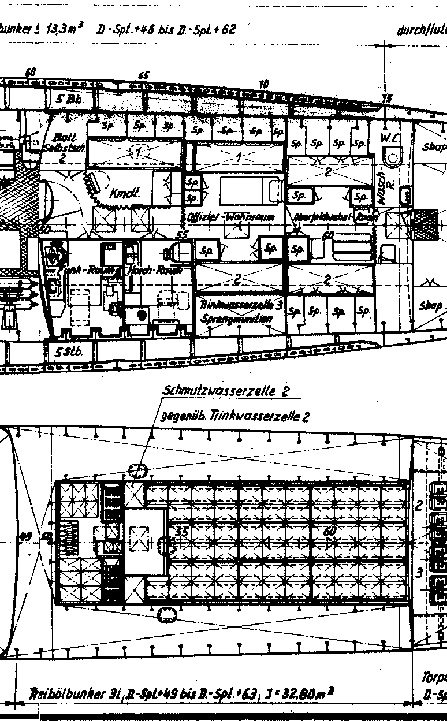
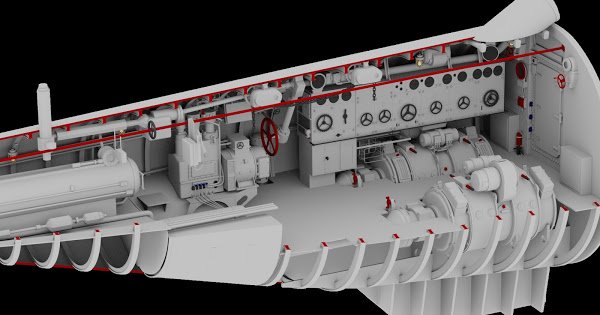




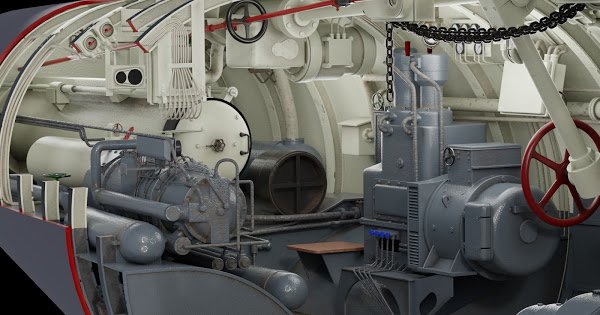

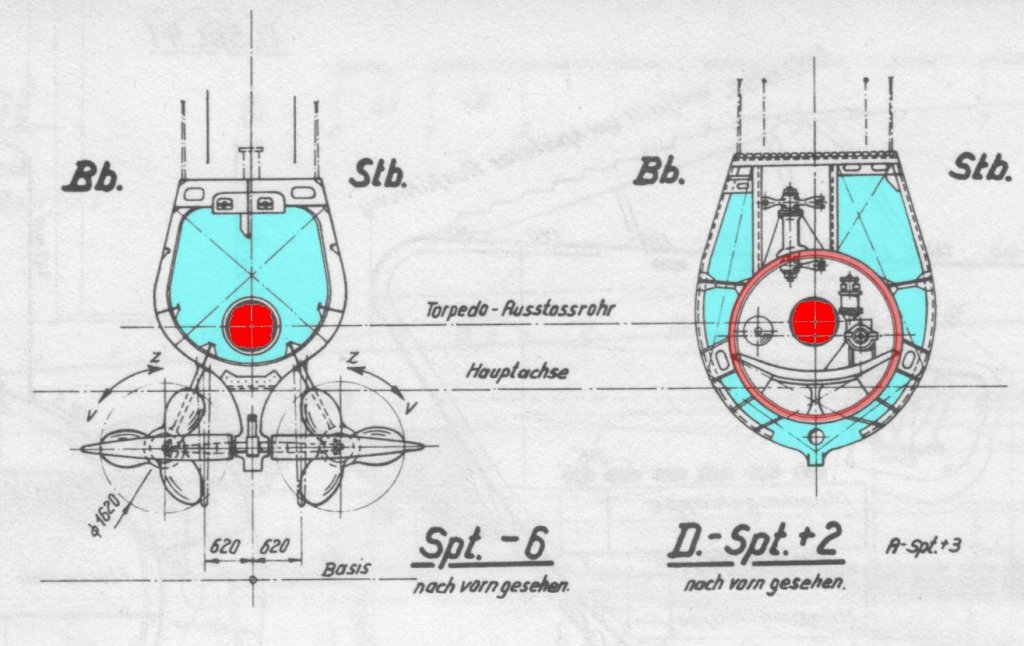
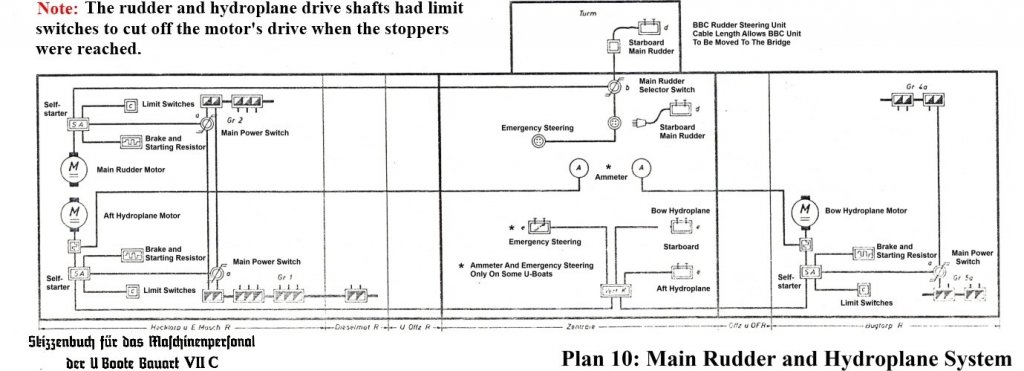
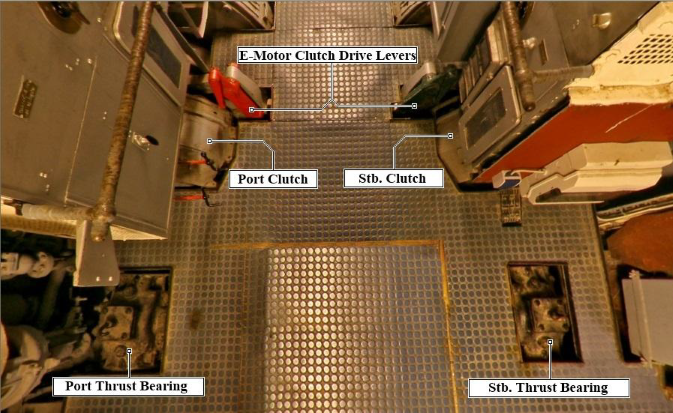
.thumb.jpg.aa132741a0a074bbff6b601ab9b40f51.jpg)
.thumb.jpg.0ec461d311f87d8ebacdeea4091f90af.jpg)
